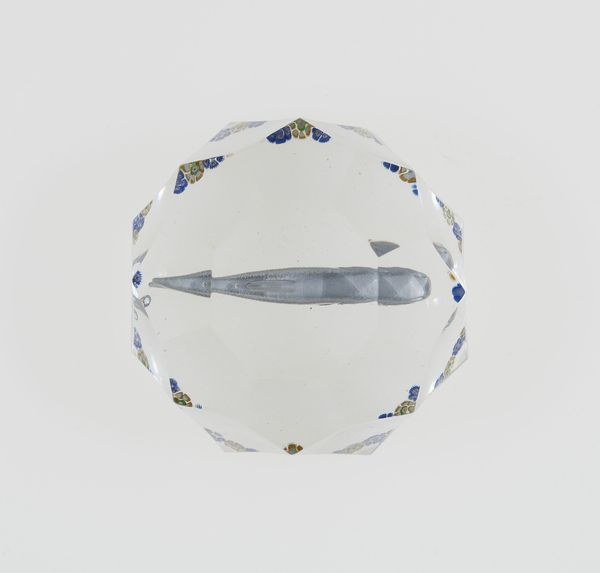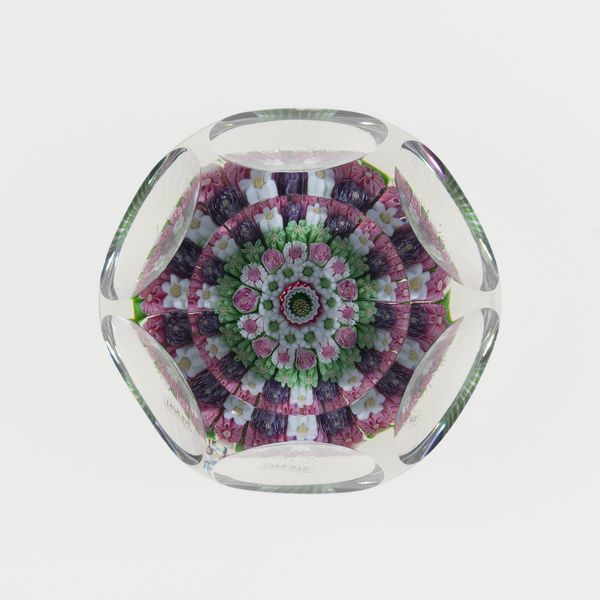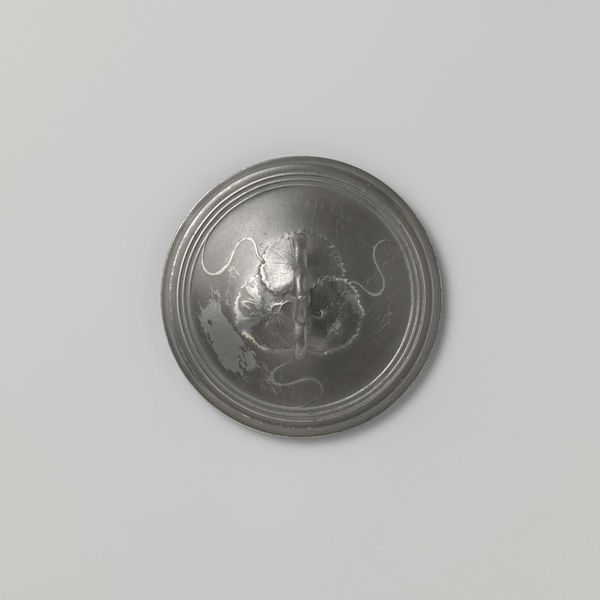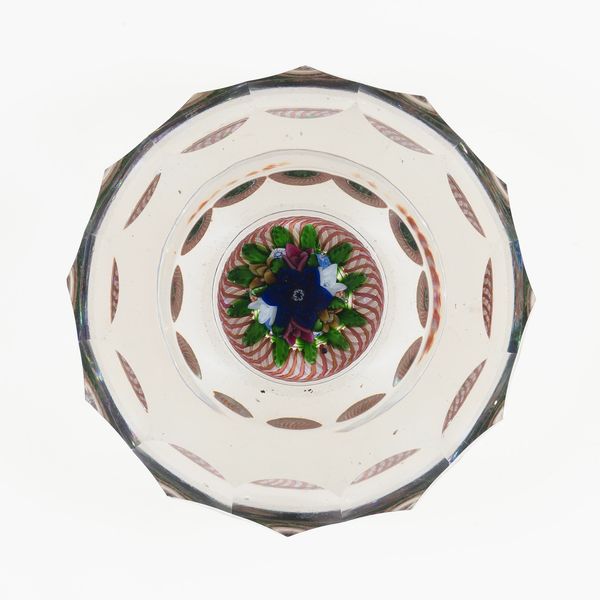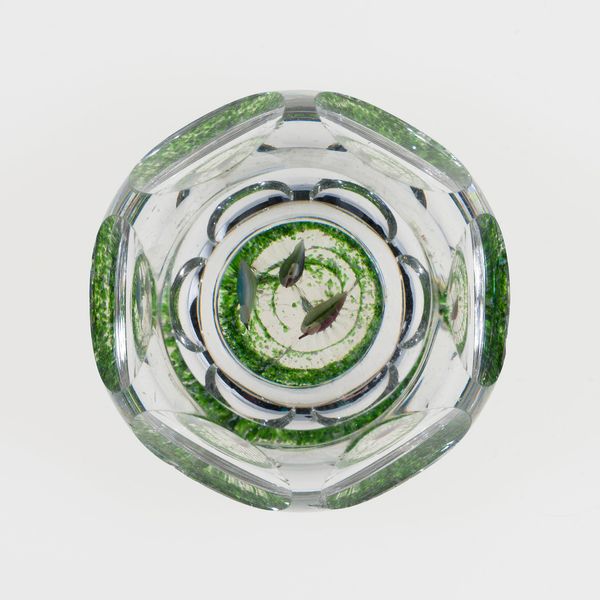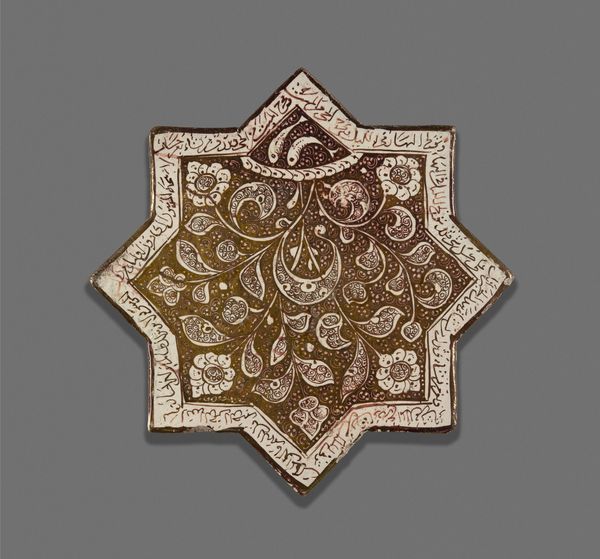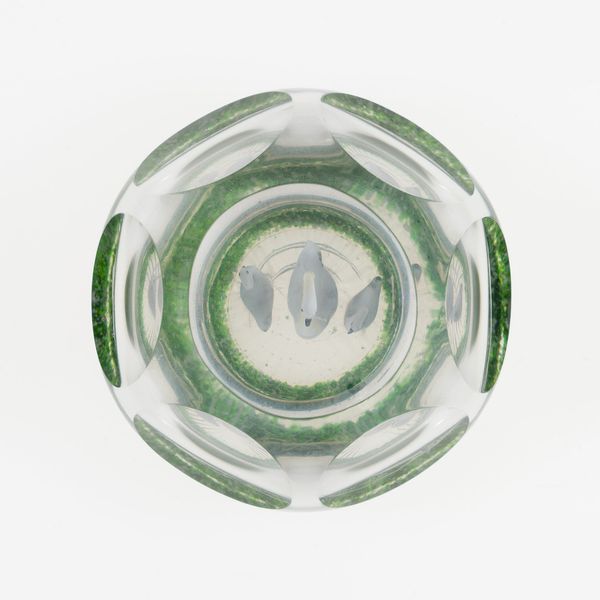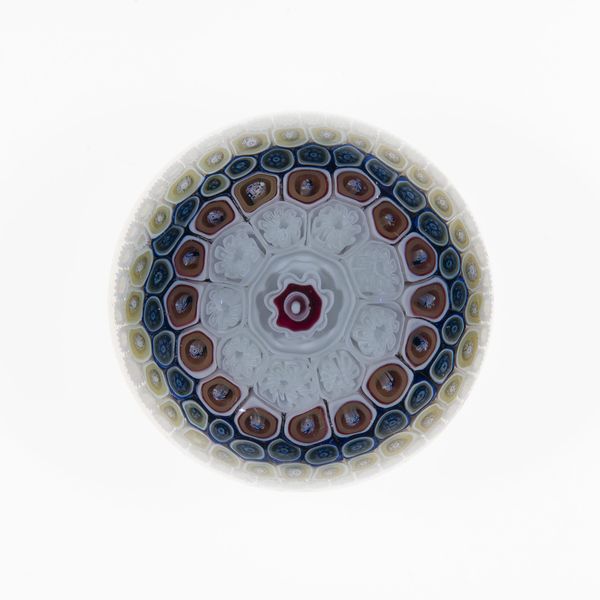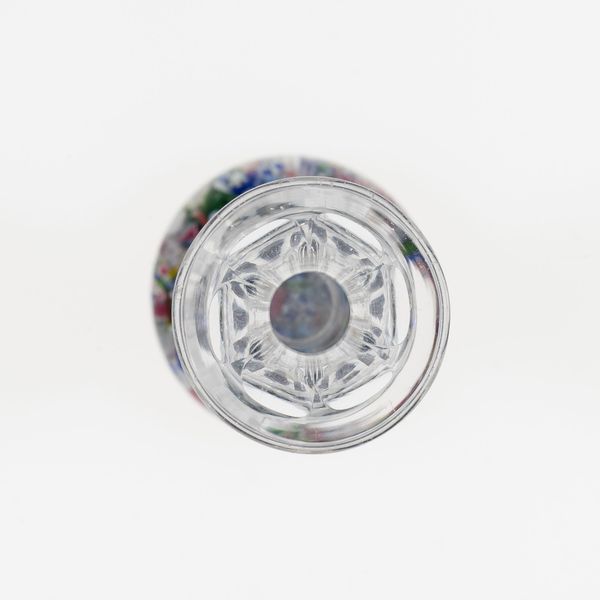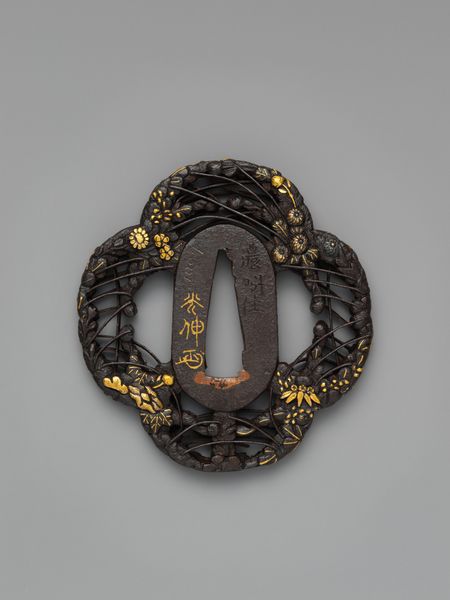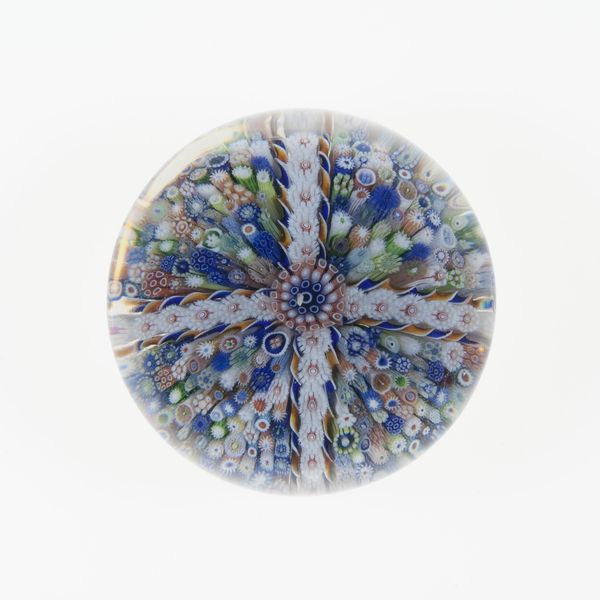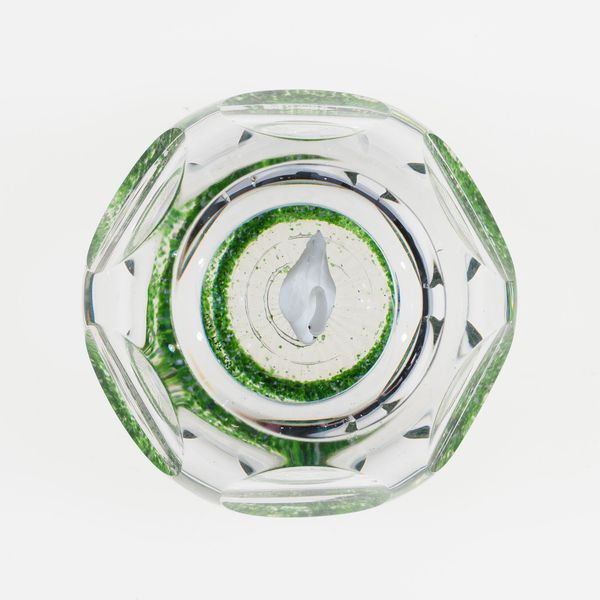
glass, sculpture
#
glass
#
sculpture
#
decorative-art
Dimensions: Diam. 7 cm (2 3/4 in.)
Copyright: Public Domain
Editor: Here we have a c. 19th-century glass paperweight crafted by Baccarat Glassworks, currently held at the Art Institute of Chicago. I'm struck by how its crystalline structure creates this sort of contained universe. How do you read this piece? Curator: What immediately springs to mind is the socio-economic context of 19th-century decorative arts. Objects like these, while seemingly innocent, speak volumes about class, labor, and the circulation of wealth. Think about the conditions in which these glassworks were produced – were they exploiting labor? Were certain demographics excluded from the creation and ownership of such objects? Editor: That's a perspective I hadn't considered. I was focused on its purely aesthetic qualities. Do you think the intended function of the paperweight—to hold down paper— also holds a certain significance? Curator: Absolutely. It's about control, about the weight of societal structures. Paper was the medium of bureaucracy, legislation, and record-keeping. This paperweight symbolizes the force – often invisible – exerted by those in power to maintain the status quo. Who had the power to generate, disseminate, and control information? And who might find that power bearing down upon them? Editor: So, you're suggesting that this decorative object may reveal underlying narratives of control and inequality embedded in 19th-century society. Curator: Precisely! Even something as seemingly simple as a paperweight invites us to interrogate its relationship with power. It can act as a starting point to critically consider who benefited from and who was oppressed by the historical circumstances in which it was produced. Editor: That definitely shifts my perspective. It is intriguing to think about an object's impact rather than its aesthetic form. Curator: That's what makes the study of art and history so compelling, isn't it? It’s about questioning the power dynamics inherent in how art is produced, received and preserved.
Comments
No comments
Be the first to comment and join the conversation on the ultimate creative platform.

